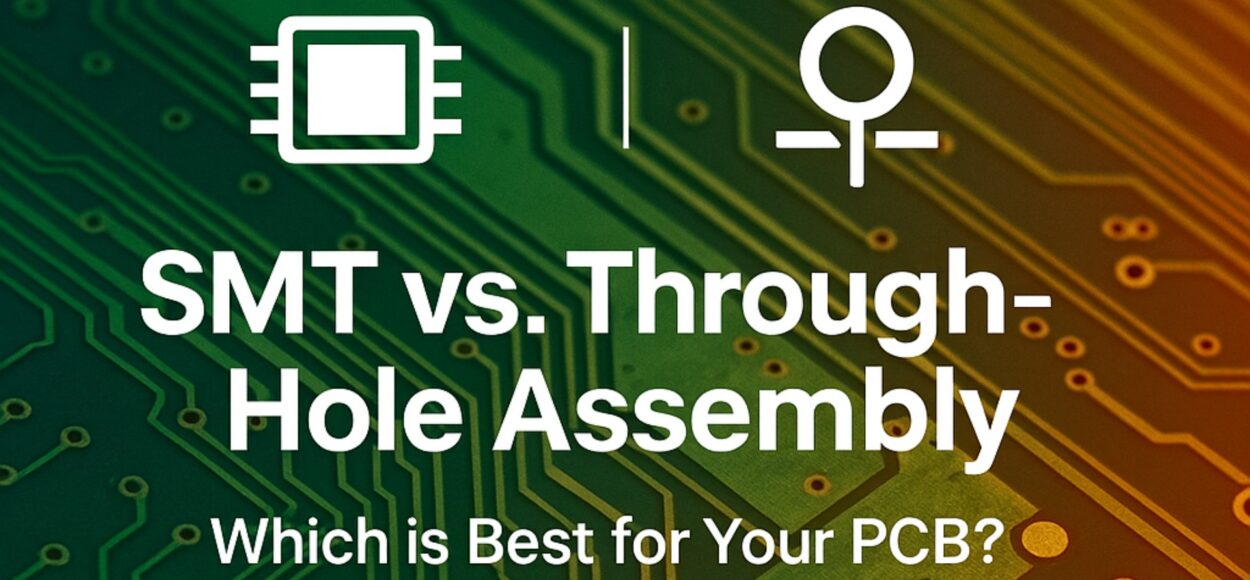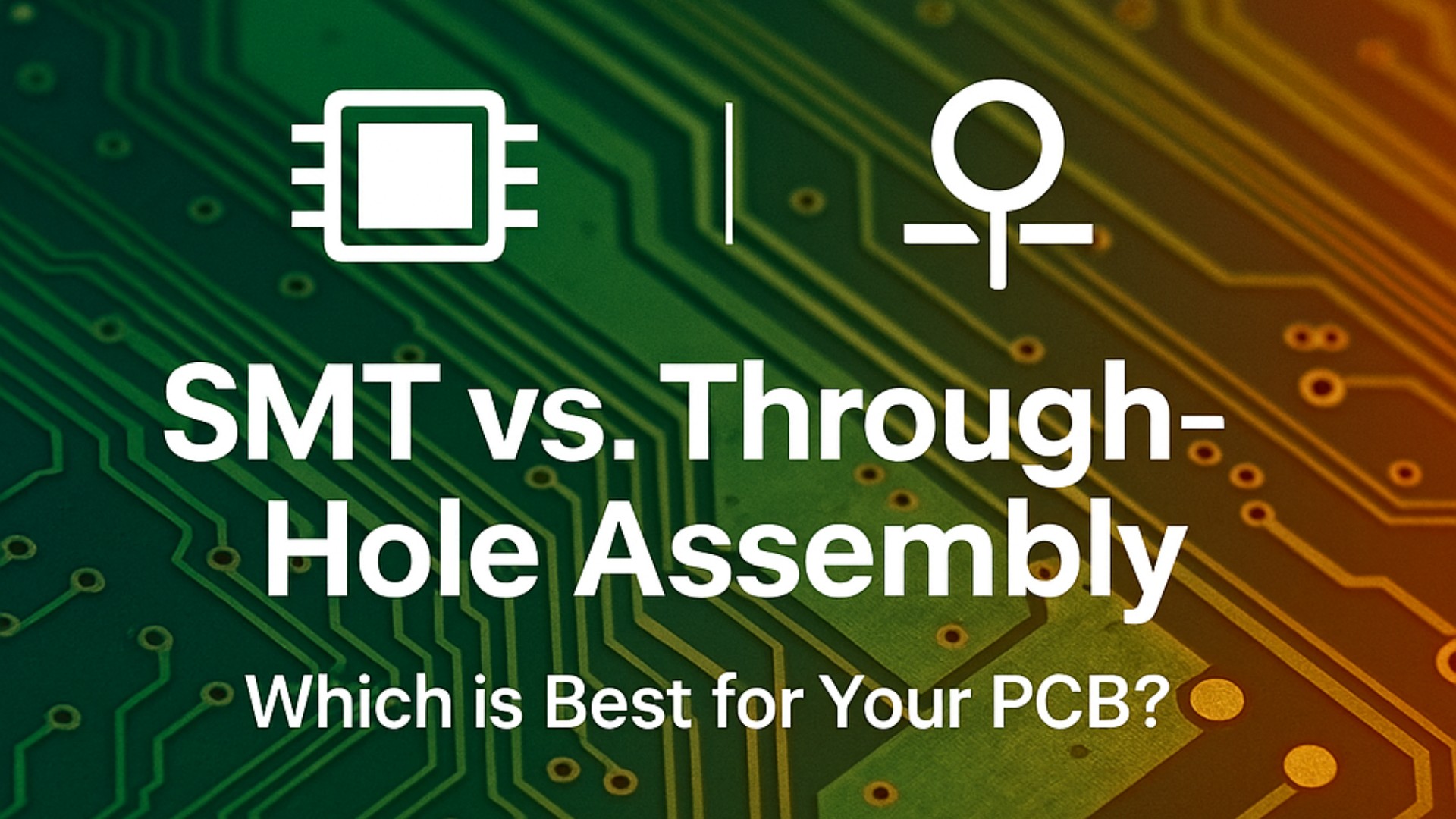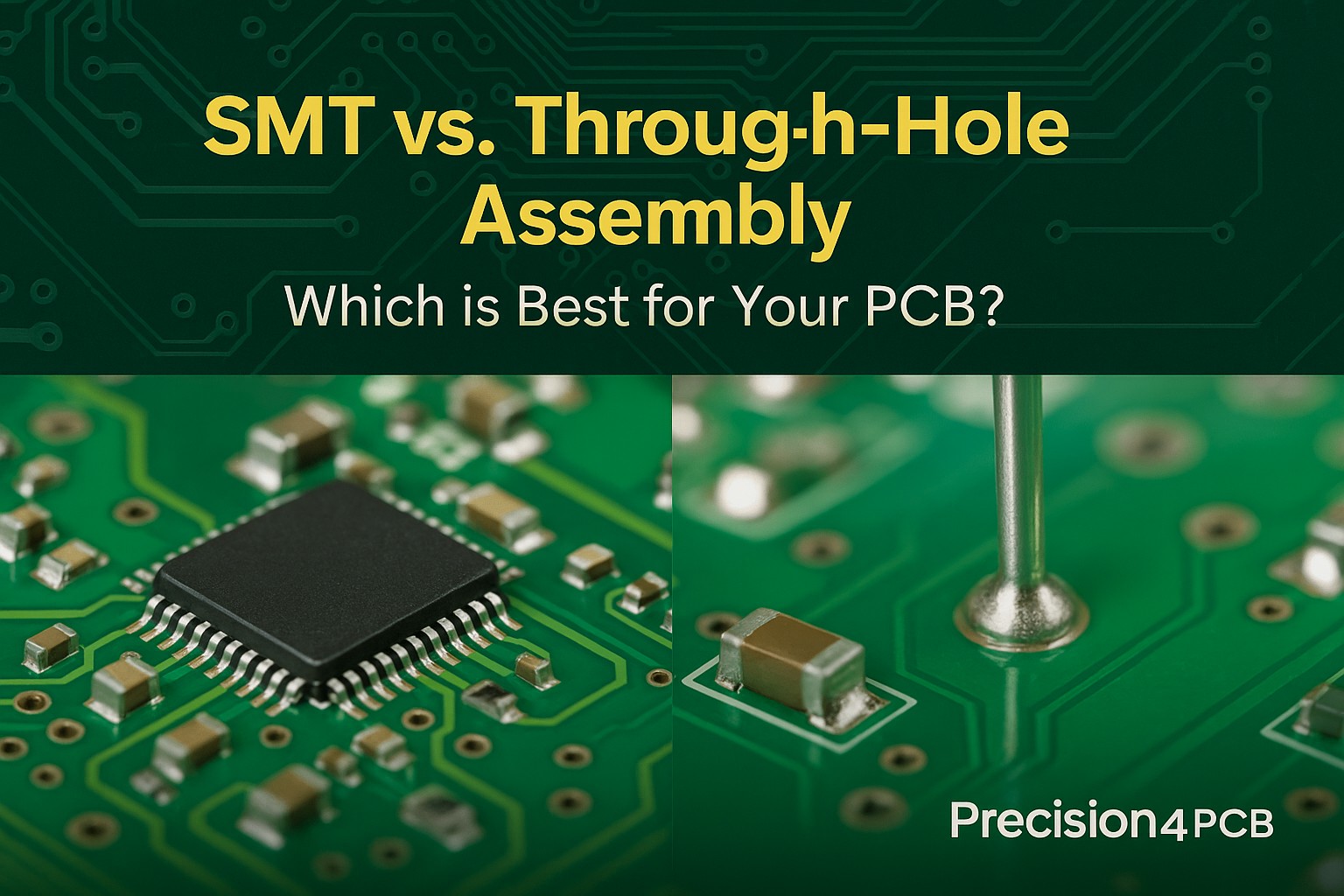
SMT vs. Through-Hole Assembly: Which is Best for Your PCB?

When it comes to PCB assembly, two methods dominate the industry: Surface Mount Technology (SMT) and Through-Hole Technology (THT). Both have their strengths, limitations, and ideal use cases. Choosing the right method can impact cost, durability, performance, and scalability of your electronic product.
At Precision4PCB, we guide engineers and product teams through this decision every day. Let’s break down the pros and cons of each technology and help you determine which one is right for your project.
What is Surface Mount Technology (SMT)?
Surface Mount Technology (SMT) involves mounting electronic components directly onto the surface of a PCB. Instead of drilling holes, components are soldered onto pads using automated pick-and-place machines and reflow ovens.
Advantages of SMT:
- Smaller size & higher density: Components are tiny, allowing more parts per board.
- Faster assembly: Automated placement enables high-volume production.
- Better high-frequency performance: Shorter leads reduce parasitic inductance and resistance.
- Cost-effective at scale: Reduced labor and efficient processes lower unit costs.
Limitations of SMT:
- Weaker mechanical strength: Soldered directly on the surface, less durable under stress.
- Not ideal for large or heavy parts: Connectors, transformers, or power components may not hold well.
- Initial setup cost: Requires specialized machinery, which can be costly for low-volume runs.
- Best suited for: Consumer electronics, smartphones, laptops, networking equipment, and high-density/high-speed circuits.
What is Through-Hole Technology (THT)?
Through-Hole Technology (THT) involves inserting component leads into drilled holes and soldering them to pads on the opposite side. It’s the older but highly reliable method of assembly.
Advantages of THT:
- Strong mechanical bond: Components are anchored through the PCB, ideal for high-stress environments.
- Better for prototyping: Easier to test, replace, or hand-solder components.
- Handles power components well: Perfect for large capacitors, connectors, and transformers.
- Durability: Ideal for aerospace, automotive, military, and industrial applications.
Limitations of THT:
- Larger board size: Components take up more space, reducing density.
- Slower production: Drilling and manual insertion increase labor and cost.
- Not ideal for high-frequency circuits: Longer leads can introduce parasitic effects.
- Best suited for: Industrial equipment, aerospace, automotive electronics, and applications requiring mechanical strength and durability.

SMT vs. Through-Hole: Head-to-Head Comparison
| Factor | SMT (Surface Mount) | THT (Through-Hole) |
| Size & Density | Compact, supports high-density designs | Larger, limits miniaturization |
| Assembly Speed | Fast, automated | Slower, manual/labor-intensive |
| Mechanical Strength | Moderate | Strong, withstands stress & vibration |
| Cost Efficiency | Lower cost at high volumes | Higher cost, especially for mass production |
| High-Frequency Performance | Excellent | Less effective due to lead length |
| Best For | Consumer electronics, high-speed circuits | Industrial, aerospace, automotive, power electronics |
The Hybrid Approach
In modern PCB design, it’s rarely “SMT or THT” – it’s often a combination of both.
For example:
- SMT for resistors, capacitors, ICs, and small passive components.
- THT for connectors, power transistors, or large transformers.
This approach balances density and performance with mechanical reliability.
FAQs: SMT vs. Through-Hole Assembly
Q1. Which is cheaper, SMT or through-hole?
SMT is generally cheaper for high-volume production, while THT can be more cost-effective for small runs or prototypes.
Q2. Which method offers better durability?
THT offers stronger mechanical strength, making it better for rugged environments.
Q3. Can SMT handle all types of components?
No. While SMT handles most, large connectors, coils, and power components are usually better with THT.
Q4. Which is better for high-speed circuits?
SMT performs better at high frequencies due to its shorter leads and minimal parasitic effects.
Q5. Should I choose one method or combine both?
Many designs use hybrid assembly, leveraging SMT for compact components and THT for heavy-duty parts.
Final Thoughts
Choosing between SMT and Through-Hole assembly depends on your project’s performance, durability, cost, and production scale. SMT is the go-to for compact, high-speed, and high-volume products, while THT excels in rugged, power-heavy, or mission-critical applications.
At Precision4PCB, we specialize in both SMT and Through-Hole assembly – offering guidance on when to use each, and delivering first-pass success with hybrid builds tailored to your product.
Ready to Choose the Right Assembly for Your PCB?
Whether your project needs the speed and compactness of SMT or the strength and reliability of Through-Hole, the right manufacturing partner makes all the difference.
At Precision4PCB, we offer:
✔ Expert support for both SMT and THT assembly
✔ Hybrid builds combining the best of both worlds
✔ Engineering reviews to prevent costly mistakes
✔ High-quality production with first-pass success
Don’t leave your PCB assembly to guesswork.
Request a Free Quote or Speak to an Engineer Today and find out which assembly method is right for your PCB.

Precision4PCB – Your Partner in High-Speed, High-Reliability PCB Manufacturing.